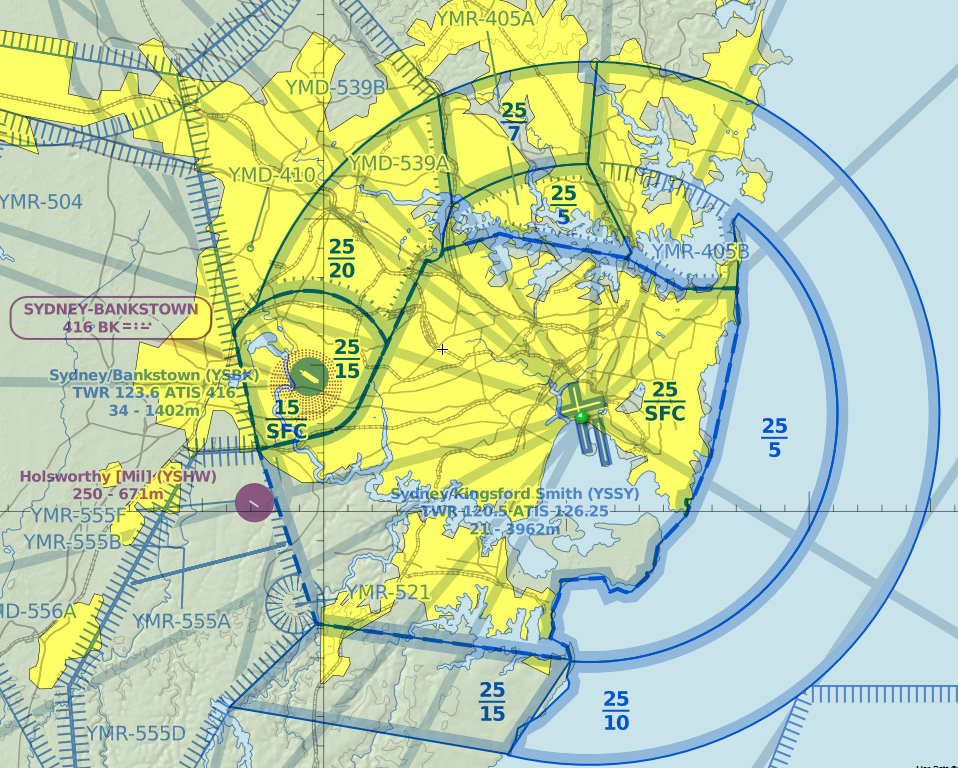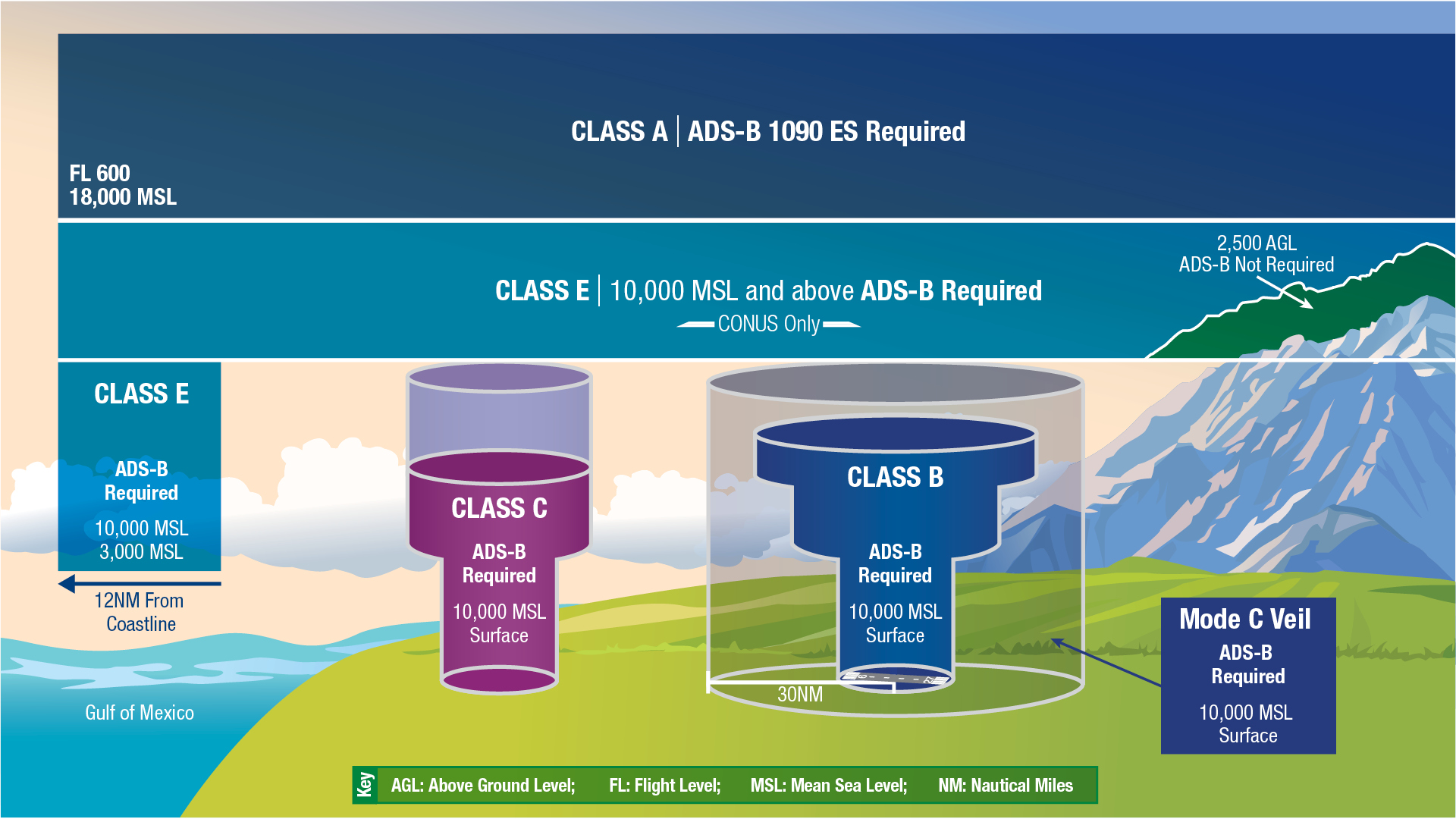class g airspace australia
CASA will ensure that all aerodromes in the Airservices Australia database will be published on aeronautical charts unless verified that they no longer exist or where. Each day around 6000 aircraft and 600000 people fly above our heads in UK skies.

Pilot S Guide To Class E Airspace Flight Training Central
Airspace which is not defined as controlled airspace is non-controlled In Australia there are five classes of controlled airspace A C D E and GAAP and one non-controlled class G.

. There are two major types of airspace in Australia. Some non-controlled aerodromes host a huge diversity of aircraft. The level of service an aircraft receives from air traffic control and the classes of airspace in which it can fly are determined by whether it is operating under visual flight rules VFR or instrument flight rules IFR.
Class G uncontrolled airspace exists below the control areas and extends from the surface to the. Sydney terminal control area is controlled by Airservices Australia. Updated 263 Class E Airspace and 264 Class G airspace.
14 rows Class G airspace will always start at the ground and go up to 14500 msl as a. Generally base 8500 ft AMS Surrounding or overlying some CTR Some low-level terminal airspace when the associated TWR is closed. The reporting flight planning and operational requirements of your flight can vary significantly depending on what class of airspace you will be.
A control tower provided procedural clearances for all aircraft inside the zone. Australia used to have a non-standard class of airspace for use at the capital city general aviation airports called a General Aviation Airport Procedures Zone GAAP Zone. The AIP and CAAP 166-01 guidance will be appropriately updated regarding.
In Australia operating in Class G airspace at or above 5000 feet AMSL VHF radio is mandatory AND pilots should maintain a listening watch on the appropriate VHF frequency for the area. The FAA proposes an amendment to 14 CFR part 71 to amend Class E airspace extending upward from 700 feet above the surface at Raleigh-Durham International Airport Raleigh NC due to the decommissioning of the LEEVY non-directional beacon NDB and cancellation of associated approaches. Uncontrolled airspace also referred to as Class G airspace has very.
Class G airspace is the portion of the airspace that has not been designated as Class A B C D or E. Larger passenger aircraft general aviation aircraft light sport aircraft. Be heard be seen be safe Our booklet called.
Class G airspace exists wherever Class A B C D or E airspace doesnt. More information on classes of airspace is available. GFA Operations Panel 44 including cover 01032018.
Boundaries of Class G Airspace It extends from the surface to the base of the overlying Class E airspace. Typically Class G airspace includes all of the airspace below 14500 ft. That is not otherwise designated Class B C or D airspace.
The diagram below represents the classes of airspace in Australia and how they connect and overlap. It is therefore designated as uncontrolled airspace. Gliding in Australia is subject to the Civil Aviation Act Civil Aviation Regulations.
This class is not used at present in Australian-administered airspace. IFR and VFR flights are permitted. Class G airspace or uncontrolled airspace has the lowest level of service and the fewest restrictions on aircraft operations.
How airspace works Airspace is assigned into categories which determine the level of service provided. Class G airspace exists everywhere else particularly between ground level and 1500 ft. In Australian Class G airspace third-party directed traffic information is provided to pilots of aircraft operating under the instrument flight rules.
And its always exclusive. At any time this mix might include. This action would eliminate the northeast extension.
In Australia these range from Class A typically en route high level airspace to Class G uncontrolled airspace predominantly used by light aircraft. The Phoenix location at the Deer Valley Airport KDVT one of the busiest airports in the world provides pilots with Class B E and Class G airspace. Within continental Australia outside radar coverage above FL180 where Class A base is FL245 Within radar coverage in specifc locations or corridors under Class C or Class A airspace.
Differences to the ICAO classes of airspace in Australia are notified to ICAO and listed in the Australian Aeronautical Information Publication AIP. HF frequencies and boundaries are shown on the AlP PCA. For example if Class E starts at 700 feet AGL Class G goes up to but doesnt include 700 feet AGL.
If outside VHF range a listening watch should be maintained on the relevant HF frequency. 114 Airspace standards 5 12 Class G Airspace 5 121 Description of Australian Class G airspace 5 122 History of change to Class G airspace 6 123 Safety issues associated with current Class G airspace 7 124 Cost of directed traffic information 10 125 Compliance with ICAO requirements 10 126 Comparison with overseas systems 11. SOP 1802AS - Project SS 1603 Page 4 5.
On a map Class Gs ceiling is the floor of Class E airspace. Airspace which is not Class AE. Sky Harbor about 15 miles outside our campus is the main commercial airport in Phoenix providing Class B airspace plus with 18 of the 92 local airports being tower controlled this allows.
IFR and VFR flights are permitted and receive a flight information service if requested. Controlled airspace is further defined by categories with specific aircraft performance equipage and pilot qualification requirements and is actively monitored and managed by ATC. 1988 Civil 1988.
Class G airspace extends from the surface to either 700 or 1200 feet AGL depending on the floor of the overlying Class E airspace. Join Online Ground School. Frequency use at low level in Class G airspace - CD 1802AS Closed 14 May 2018 Opened 27 Apr 2018 Contact 131 757 regulatoryconsultationcasagovau Results updated 18 Oct 2018 This consultation proposed the use of 1267 MHz specifically in the circuit area of uncharted aerodromes instead of the current recommendation to use the area frequency.
CONSULTATION DRAFT FOR FREQUENCY USE IN CLASS G AIRSPACE. Practically it starts at the surface and extends up until it hits Class E airspace. Below is a brief guide to how the.
Class G airspace. Authorised by No of pages Effective date. A non-controlled aerodrome is an aerodrome in non-controlled airspace also known as Class G airspace.
IFR and VFR flights receive a flight information service. At NATS we manage a complex invisible infrastructure that helps a diverse variety of airspace users including leisure commercial cargo and military users to operate safely in the sky. Class G airspace is uncontrolled airspace that has not been designated as Class A B C D or E.
The airspace classification system to be used in Australia is specified below. Page 5. The total volume of Class G airspace within 45 nautical miles of Sydney varies depending on the activation of various restricted areas and control zones.
37 Australias airspace administration will be consistent with the objectives and priorities identified in the ICAO Global Aviation Safety Plan GASP and ICAO Global.

I Busted The Sydney Airspace Help Charts Navigation And Flightplanning Help Vatsim Community

Ivao Oceanic Region Pilot Training
Controlled Airspace Overview Pilot Practice Exams Com

Is This Class G Airspace Aviation Stack Exchange
Lateral Airspace Structure Excerpt From Aviation Chart Aip 97 Download Scientific Diagram

3 Airspace Classes Courtesy Of U S Department Of Transportation Download Scientific Diagram

Douglas A 4g Skyhawk Royal Australian Navy Royal Australian Air Force Naval Aviator

Ads B Update 2022 Where Are We Now

The All First Class Cabin Aboard The Royal Flight Of Oman S Vickers Standard Vc10 Series 1100 A4o Ab Aircraft Interiors Airline Interiors Airplane Interior

Vmc In Australian Airspace Youtube

Airspace Classes Types Of Airspace Classes And How They Are Defined Atp Flight School

Lowering Of Class E Airspace In Low Density Continental Areas Engage Airservices

Australian Airspace Classification System
Non Controlled Airspace Pilot Practice Exams Com

Class D Airspace Explained Boldmethod

Airspace And Its Types Of Classification Aviation For Aviators


